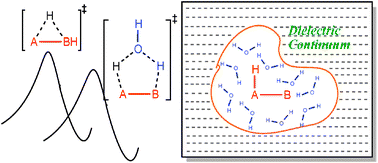Microsolvated transition state models for improved insight into chemical properties and reaction mechanisms
Abstract
Over the years, several methods have been developed to effectively represent the chemical behavior of solutes in

* Corresponding authors
a
Department of Chemistry, Indian Institute of Technology Bombay, Powai, Mumbai 400076, India
E-mail:
sunoj@chem.iitb.ac.in
Fax: +91 222 576 7173
Over the years, several methods have been developed to effectively represent the chemical behavior of solutes in

 Please wait while we load your content...
Something went wrong. Try again?
Please wait while we load your content...
Something went wrong. Try again?
R. B. Sunoj and M. Anand, Phys. Chem. Chem. Phys., 2012, 14, 12715 DOI: 10.1039/C2CP41719G
To request permission to reproduce material from this article, please go to the Copyright Clearance Center request page.
If you are an author contributing to an RSC publication, you do not need to request permission provided correct acknowledgement is given.
If you are the author of this article, you do not need to request permission to reproduce figures and diagrams provided correct acknowledgement is given. If you want to reproduce the whole article in a third-party publication (excluding your thesis/dissertation for which permission is not required) please go to the Copyright Clearance Center request page.
Read more about how to correctly acknowledge RSC content.
 Fetching data from CrossRef.
Fetching data from CrossRef.
This may take some time to load.
Loading related content
